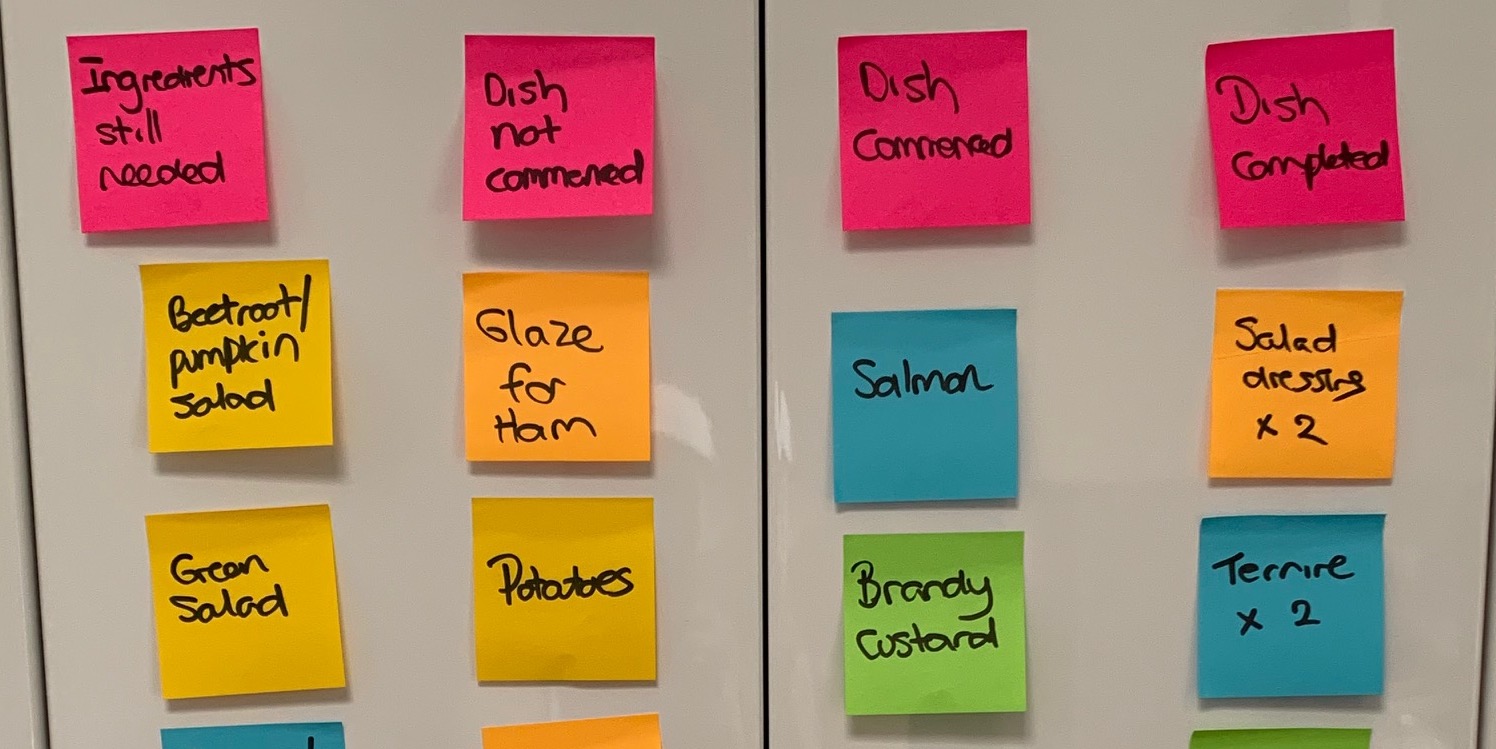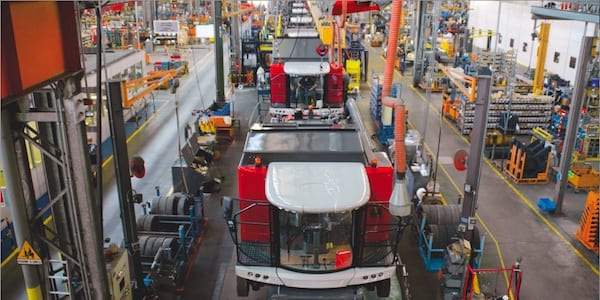
The practice of reflection
FEATURE – The holidays are a time for reflection. The author shares some her reflections on her experience with lean and the role of leadership in a lean transformation.
Words – Denise Bennett, Management & Improvement Systems Coach, Lean Enterprise Australia
The transition from one year to the next and, this year, from one decade to the next provides an excellent time for personal reflection. Many of us make our New Year resolutions, but how often do we ground these resolutions in reflection? This is such a busy time for most of us in our personal lives. Often the new work year is upon us before we have had an opportunity to stop, reflect and learn from both our personal and work life experiences.
With January being a quieter time for many organizations, scheduling reflection within this first week back at work is totally achievable. I, for one, get to spend more time at home and I am spending it reflecting – which I love to do while running on the beach five minutes from my home. I would like to share with you a few of my “running” reflections.
CHRISTMAS REFLECTION
This year we hosted the Christmas meal and so, fresh off the plane from the US, I immersed myself in three days of shopping, cooking and cleaning. To keep myself on track (and entertained), the pantry doors were turned into a visual board to indicate progress of the menu elements. My family found this hilarious, but I got the last laugh when for the first time since I can remember, every course element was delivered on time with 100% quality. No food item was missing, found in the microwave or hidden on a corner of the bench during clean-up.
I also found myself temporarily deaf on Christmas day after a morning swim resulted in two completely blocked ears and a huge earache. Feeling stressed, in pain and totally isolated from my “hearing” guests, the visual practice helped me hold it all together in abnormal circumstances.
Visual practice can be used anywhere to support the flow of our work. It works for individuals, teams and organizations.
2019 REFLECTION
As I reflected on my year of work in 2019, I celebrated that this was my 40th year of fairly continuous full-time work and I am now clear about what I really like to do and where I believe I can add value.
Over the past year, I have got to know many teams from different organizations and sectors. While the work that they do varies, it is always easy to identify opportunities for improvement. But the technical part of lean is the easy part (and it is fun!) for a lean coach – where and how to improve can be easily seen. The struggle is helping leaders and teams lift their heads out of the non-value-added work and give them a glimpse of how things could be better for their customers, their organizations and themselves. This often means simply encouraging them to try, experiment and learn and then experiment again. Increasingly in this age of digitalization, it is also a challenge to convince teams that many processes can be made easier without the budget and the wait for an IT solution, and that there is something they could do differently today for no cost.
The joy in my work comes from finding and working with those formal or informal leaders who are willing to learn and try. They are willing to take a leap of faith and try something different even if it feels uncomfortable at first. One of these leaders described her experience of introducing daily huddles like going on a first date. “It felt weird, unnatural and forced to start with, but fairly quickly it became comfortable and we were all much more relaxed. Within a few weeks we were loving it!” she told me. These leaders will engage their teammates, convince them to participate, coach them and show them that continuous improvement can be done by anyone who is willing to “have a go”. The work that is so difficult for me to do as an external coach is easy for them. They have trusting relationships with their co-workers and they can influence up, down and horizontally. Pull is alive and well and the lean transformation grows largely by stealth rather than by design. Pockets of improvement emerge in unexpected places. Messages like “you can too” have more impact than “you must”.
I have the privilege of working alongside these leaders to support them in their important work. In 2020, I want to do more of this!
REFLECTIONS ON THE 2010s
The 2010s was the first full decade that my work was largely focused on the application of Lean Thinking as an improvement, management and leadership system. At the turn of the last decade, my family celebrated as my young niece survived a rare and almost terminal illness. During this experience, I lost faith that healthcare could be improved as I witnessed defect after defect, often intervening to alter the course of action and keep my niece safe. As a nurse, I lost faith in the nursing profession as I observed the work to be mostly technical and reactive and missing the focus on caring and connecting – the work that has traditionally set nursing apart (rightly or wrongly) from other healthcare professions.
To take a break from improving healthcare, I transitioned my work to local government where I learned so much about leadership and developing people. I honed my lean skills for a diverse set of businesses, something that is quite unique to the work of local government. We found it worked everywhere regardless of whether the work was transactional or project based. We pioneered its use in many settings, including managing significant issues and risks for the organization. This made the CEO feel more informed, stakeholders more consulted and reduced the time to address political and sensitive issues.
But I was always going to be drawn back to healthcare, and halfway through the 2010s my family moved to California where I worked as the lean leader at Stanford Children’s Health. Here, I learned that doctors could be successfully engaged in meaningful improvement work and that a daily management system can reduce so much reactive work through proactive activities like huddles, gemba rounds and team-based problem solving. I learned that the front line could be engaged in, and contribute to, the achievement of corporate goals through the catchball process and that small step improvements were as much as an opportunity to develop coaches as well as improvers.
I also learned that we have built in a better system for leader development in Australia. With more generous leave entitlements, we encourage at least one longer break annually for even senior leaders, which provides opportunities for staff to “act up” and this in turn provides opportunities to backfill, and so on. One senior leader’s leave may provide multiple staff with the opportunity to advance their leadership skills. Many a leader has been identified and nurtured through this process. In the US organizations I became familiar with, a one-week break was the most common, 10 days at a stretch. The leader’s work was shared out to peers or someone became the contact during their absence. The leader kept an eye on their emails while away and came back to a significant backlog of work. One of my colleagues shared that she was frequently contacted by her boss while on leave and said that it was just not worth trying to have a longer break due to the pressure on return. There was inadequate time to wind down and leaders felt guilty about overburdening their peers. Let’s protect our existing system and leverage on the opportunities to strategically develop more leaders, while we enjoy a well-deserved break. Reflect on what is happening in your organization at the moment. Have you been thoughtful about developing a team member or colleague while you are spending time with your family over the summer break?
VISION FOR THE NEXT DECADE OF LEAN THINKING
I took the opportunity to close my computer over the break, with the only work permissible being reflection. I have shared some of these reflections with you. The practice of intentional reflection has helped me see more clearly where I need to focus and develop for the coming year and into this next decade.
One thing that is clear to me is that, as we are faced with new challenges and continue to experiment and learn, Lean Thinking and Practice will continue to evolve. The 2010s saw the influence of Agile, Lean StartUp, Lean Product Development, Design Thinking and Human-centered Design. In my own practice, I have learned new techniques and methods that increased my effectiveness as a lean leader and coach. So, although I have clearer vision on what a lean management and improvement system looks like and how to get there, I need to keep my eyes wide open for opportunities to enhance and improve the way that I support leaders within organizations to deliver more value to their customers, and enhance meaningful work of their staff.
Improving our improvement and management systems is as important as improving our processes.
THE AUTHOR

Read more


FEATURE – The author reflects on how lean organizations are reacting to the Covid-19 crisis and discusses the tough questions they are asking themselves.


CASE STUDY - An approach based on Lean Daily Management System and experiments in a model area led an Italian manufacturer of combine-harvesters to become one of the leanest organizations in the Veneto region.


FEATURE – The problems agricultural businesses encounter every day can be solved using simple concepts of lean maintenance, resulting in considerable gains.


INTERVIEW – In the face of rapid change, UniCredit Bulbank embedded Lean Thinking to simplify work and empower front-line innovation, proving leadership thrives on teamwork, continuous improvement, and adaptable processes.

